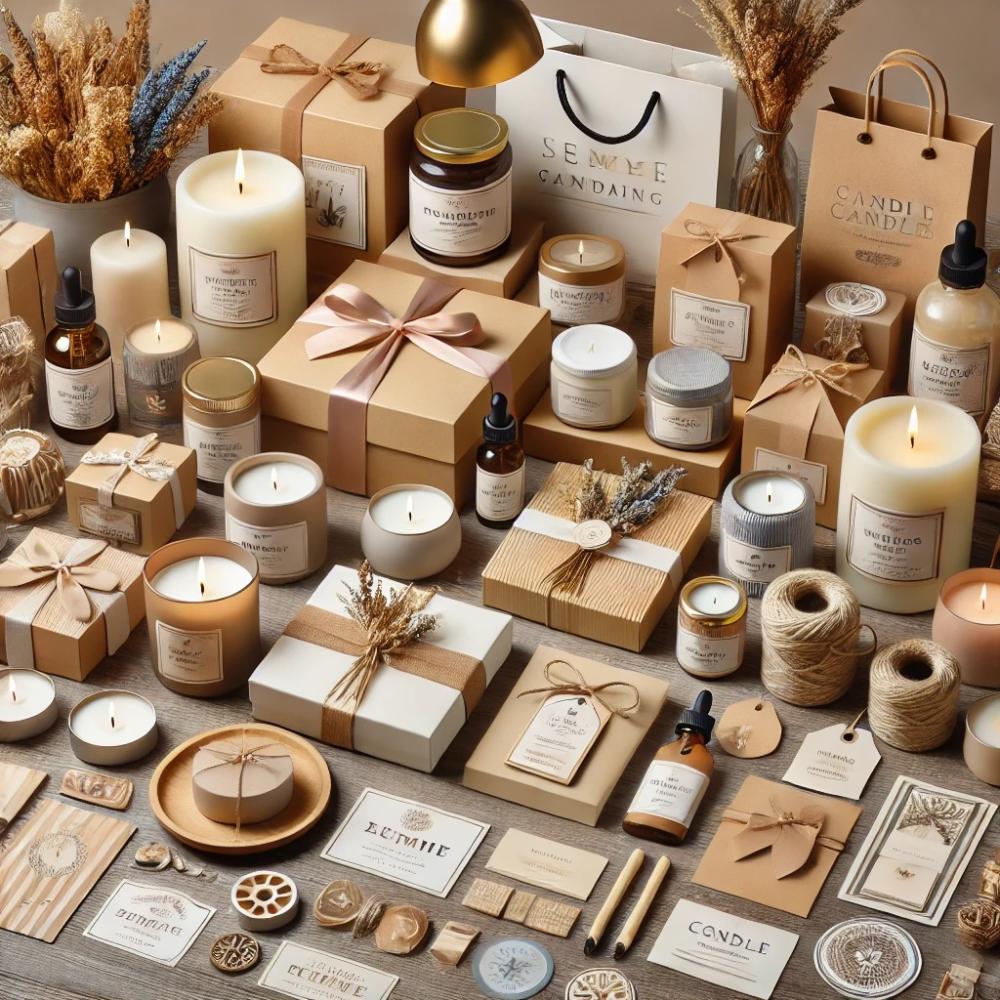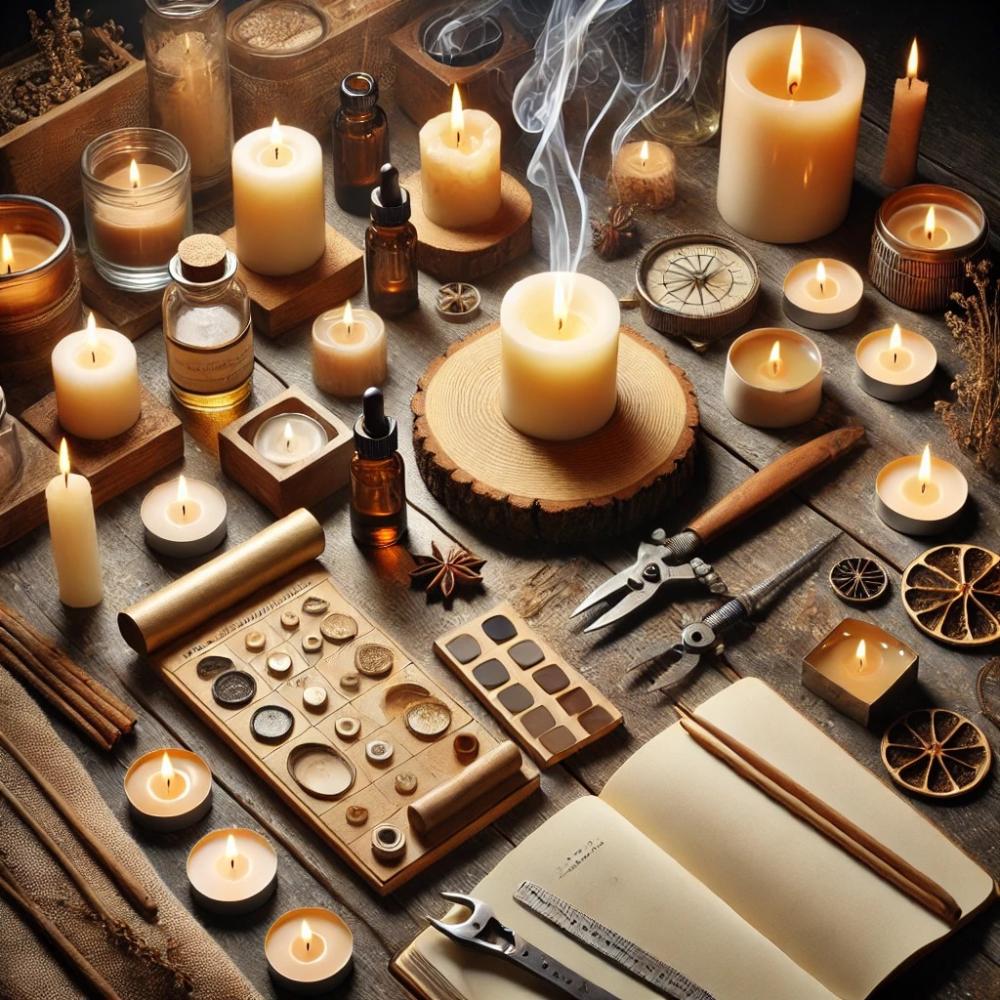If you're interested in getting into candle making, the first step is learning about the essential tools and materials you'll need to get started. Candle making might seem complicated at first, but with the right tools and simple steps, you can create beautiful candles that add a unique touch to your home or make special gifts. In this guide, we'll cover everything you need to begin your candle-making adventure, from choosing the right wax to selecting the right tools.
1. Choosing the right type of wax
A. Paraffin wax
Paraffin wax is one of the most commonly used types of candles due to its availability and ease of use. It also holds scents and colors well, making it an excellent choice for beginners.
- Advantages : Low cost, easy to dissolve, efficiently carries colors and fragrances.
- Disadvantages : It is not environmentally friendly because it is extracted from petroleum.
b. Soy wax
Soy wax is a natural and environmentally friendly option. Beginners often prefer it because it melts at a low temperature, making it safe and easy to use.
- Advantages : Natural and environmentally friendly, burns longer, holds fragrance well.
- Disadvantages : Slightly higher cost compared to paraffin wax.
c. Beeswax
If you're looking for completely natural candles, beeswax is the perfect choice. It's used in both scented and unscented candles and gives them a natural shine.
- Advantages : Natural, burns slowly, has a light, natural scent.
- Disadvantages : Expensive, and may be more difficult for beginners to deal with.
Dr. Coconut Wax
Coconut wax is another natural option, which can be mixed with soy wax or paraffin to achieve different results.
- Advantages : Natural, holds fragrance well, gives a soft touch to candles.
- Disadvantages : Relatively high cost.
2. Wicks
A. Types of wicks
Choosing the right wick is crucial. Wicks can be made of cotton, wood, or organic materials. Cotton wicks are preferred for classic candles, while wooden wicks offer a more modern touch and produce a crackling sound as they burn.
b. Wick size
The wick size depends on the size of the candle and the type of wax used. If the wick is too small, it may result in uneven burning, and if it is too large, it may produce excessive smoke. You can find guide charts from suppliers to help you choose the right size.
3. Basic tools
A. Double vessels (water bath)
Using a double boiler to melt wax is the safest method. The wax container is placed inside a larger container filled with hot water. This method prevents the wax from overheating or burning.
b. Thermometer
A thermometer helps you monitor the wax temperature as it melts. Most candles require the wax to be poured at specific temperatures to ensure optimal results. Ideally, the thermometer should be between 50 and 100 degrees Celsius.
c. Candle molds
Candle molds are available in various shapes and sizes, including silicone and plastic. Choose the mold that best suits your desired design.
Dr. Spoons and stirring bowls
Use a wooden or silicone spoon to stir the wax. Choose heat-resistant containers for the pouring process.
e. Wick base
Wick bases are used to secure the wick to the bottom of the mold and ensure it remains centered while the wax is being poured. These bases come in different sizes to accommodate different types of wicks.
4. Essential oils and colors
A. Essential Oils
To add a distinctive fragrance to your candles, use essential oils specifically designed for candle making. Avoid using generic essential oils as they may not be compatible with the wax or may produce smoke when burned.
B. Colors
Candle colors come in flakes, powder, or liquid form. Add the color to the melted wax and stir well to ensure even distribution. Keep in mind that the color may lighten as the candle cools.
5. Other important equipment for beginners
A. Protective gloves
Use gloves to protect your hands from the hot wax during the pouring and stirring process.
B. Stickers
To identify your candles after they're made, use labels that indicate the type of wax, the fragrance used, and the manufacturing date. These details help organize the production process.
Conclusion
Getting started in the world of candle making isn't difficult, but it does require some basic tools and materials to ensure success. From choosing the right wax to selecting the perfect wick, every step is crucial for creating a beautiful and unique candle. Be sure to purchase high-quality equipment and follow instructions to achieve the best results. With time and experience, you'll be able to expand your skills and experiment with new candle-making techniques.




